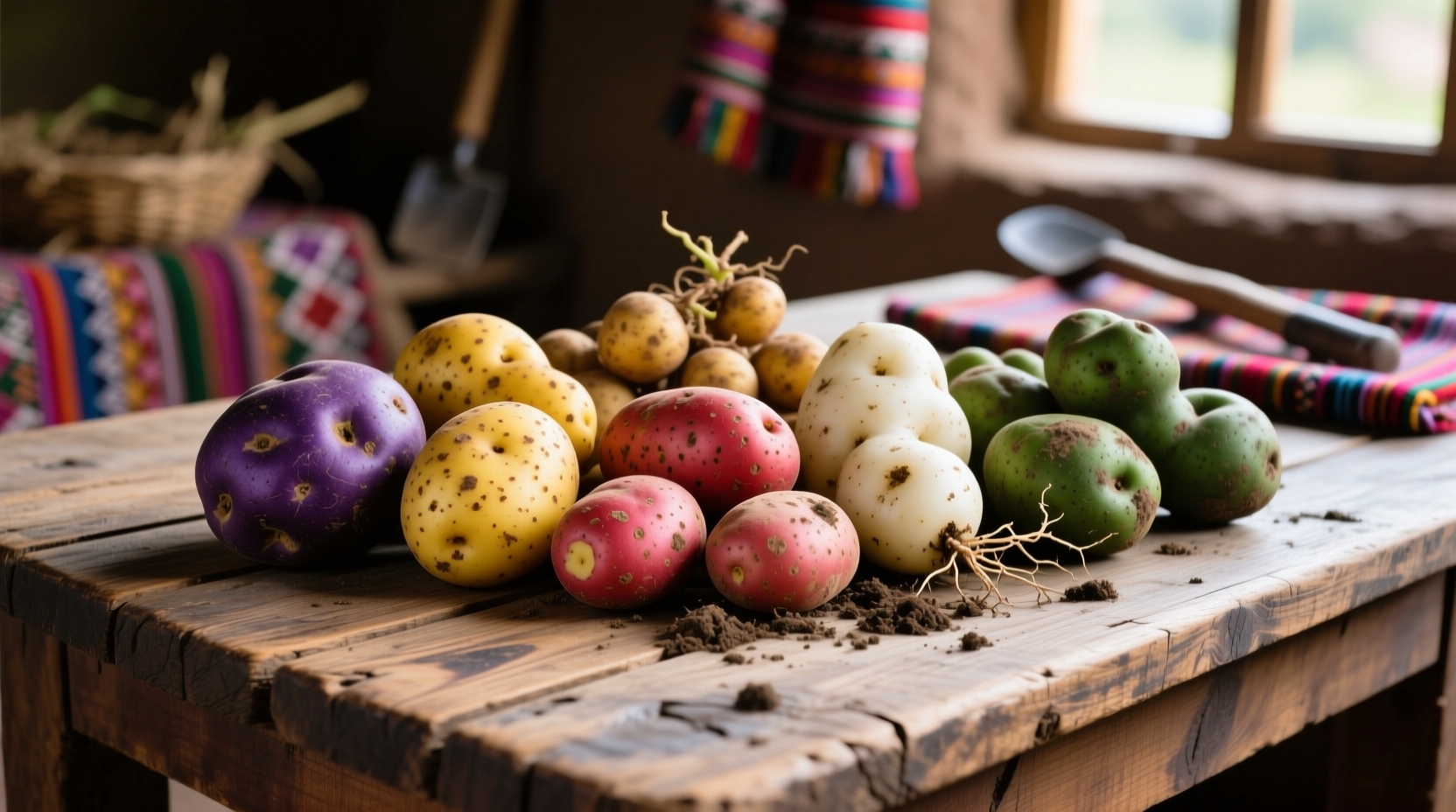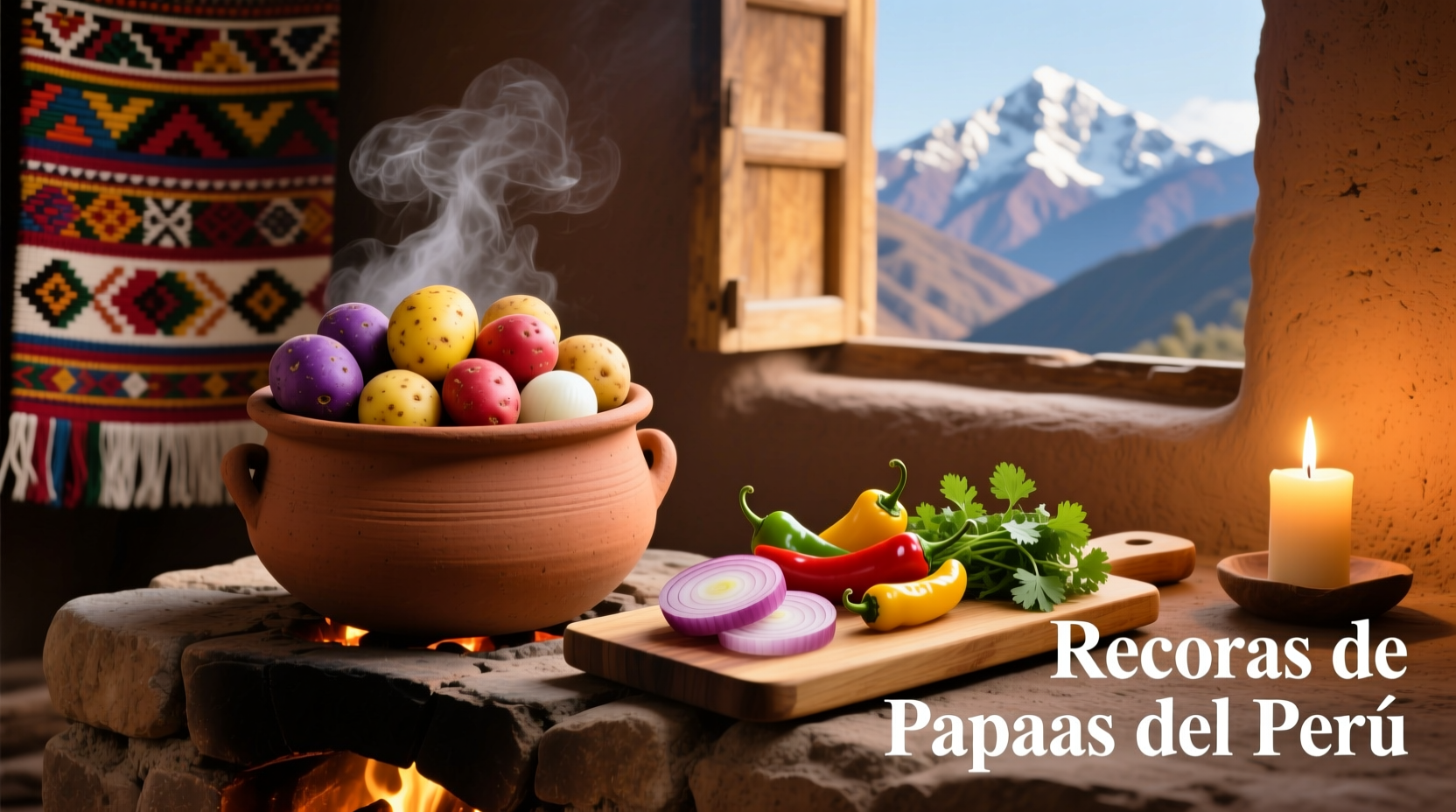Peruvian cuisine features over 4,000 native potato varieties that form the foundation of traditional dishes. These recipes showcase authentic preparation techniques passed down through generations in the Andes mountains, using ingredients and methods documented by agricultural researchers at the International Potato Center (CIP).
The Ancient Heritage of Peruvian Potatoes
Potatoes originated in the Andes over 8,000 years ago, with cultivation beginning around 2500 BCE near Lake Titicaca. This timeline shows how potato cultivation evolved in Peru:
| Time Period | Development | Source |
|---|---|---|
| 8000-5000 BCE | Initial domestication of wild potatoes by Andean communities | International Potato Center |
| 1530s | Spanish conquistadors introduce potatoes to Europe | UNESCO Intangible Cultural Heritage |
| 1968 | Establishment of the International Potato Center in Lima | CIP Historical Archives |
| 2011 | UNESCO recognizes Andean agricultural knowledge as intangible cultural heritage | UNESCO Intangible Cultural Heritage List |
Essential Native Potato Varieties for Authentic Cooking
While standard grocery stores carry russet or Yukon gold potatoes, traditional Peruvian cooking relies on specific native varieties. The International Potato Center maintains a genebank with over 7,000 potato varieties, including these essential types for authentic recipes:
- Papa Amarilla (Yellow Potato): The star of causa and papa a la huancaína, with creamy texture that holds shape when boiled
- Papa Blanca (White Potato): Used for soups and stews, with higher starch content
- Papa Negra (Black Potato): Adds dramatic color to causa layers with earthy flavor
- Papa Peruanita: Small, waxy potatoes perfect for salads with thin skins
When native varieties aren't available, substitute Yukon Gold for papa amarilla and red potatoes for papa peruanita, but understand you'll miss the distinctive flavors that make these dishes authentically Peruvian.

Mastering Traditional Preparation Techniques
Authentic Peruvian potato dishes require specific preparation methods that maximize flavor and texture:
Boiling for Perfect Texture
Unlike standard boiling, Peruvians add salt and a pinch of baking soda to the water, which:
- Preserves vibrant colors in colored potatoes
- Creates creamier texture without becoming waterlogged
- Enhances natural sweetness through controlled Maillard reaction
The Art of Mashing
Traditional wooden potato mashers (called wankas) create the ideal texture for causa:
- Mash potatoes while still warm for smoother consistency
- Incorporate achiote oil gradually for even color distribution
- Stop mashing when small lumps remain for authentic texture
Three Authentic Peruvian Potato Recipes
Classic Causa Rellena (Layered Potato Casserole)
This iconic dish features vibrant layers of mashed potatoes surrounding a savory filling. Originating in Lima during the 19th century, causa gets its name from the Quechua word kausay meaning "to live" or "life."
Ingredients
- 2 lbs papa amarilla (or Yukon Gold substitute), peeled
- 3 tbsp achiote oil (annatto seed-infused oil)
- 2 limes, juiced
- 1 cup chicken or vegetable broth
- 1 cup shredded cooked chicken
- 1/2 cup mayonnaise
- 1 avocado, sliced
- 1 jar (4 oz) pimientos, drained and sliced
Preparation
- Boil potatoes with salt and baking soda until tender but firm (15-20 minutes)
- Mash potatoes while warm with achiote oil and lime juice until smooth
- Layer half the potatoes in a rectangular mold lined with plastic wrap
- Spread chicken mixed with mayonnaise and broth over potato layer
- Add avocado slices and pimientos
- Cover with remaining potatoes, press gently, and refrigerate 2 hours
- Invert onto serving plate and garnish with olives and lettuce
Papa Rellena (Stuffed Potatoes)
These savory potato croquettes originated as street food in Lima's markets. The filling typically includes ingredients that would otherwise go to waste, reflecting traditional Andean principles of using all available resources.
Key Technique: The Perfect Binding
The secret to papa rellena that holds together during frying lies in the potato-to-starch ratio:
- Use slightly undercooked potatoes for better binding
- Add 1 tablespoon cornstarch per pound of potatoes
- Cool filling completely before stuffing to prevent leakage
Papa a la Huancaína (Potatoes in Spicy Cheese Sauce)
Hailing from the Huancayo region, this dish features boiled potatoes smothered in a vibrant orange sauce made from local peppers and fresh cheese. The sauce's distinctive color comes from aji amarillo peppers, which contain more vitamin C than oranges.
Authentic Sauce Preparation
Traditional preparation requires toasting the aji amarillo paste before blending:
- Heat 2 tbsp oil in skillet and add 3 tbsp aji amarillo paste
- Toast for 2 minutes until fragrant but not burnt
- Add 1 cup queso fresco or feta cheese, 1/2 cup evaporated milk, and 1 boiled potato
- Blend until completely smooth before serving
Serving Traditions and Modern Adaptations
In Peru, potato dishes follow specific serving customs that enhance the dining experience:
- Temperature contrast: Serve causa chilled but papa a la huancaína at room temperature
- Accompaniments: Always include olives, hard-boiled eggs, and lettuce for visual contrast
- Seasonal variations: Summer versions feature lighter fillings while winter versions include heartier meats
Modern chefs in Lima's top restaurants like Central and Maido have elevated these traditional dishes while respecting their cultural roots. When preparing these recipes at home, remember that authenticity comes from respecting the techniques and ingredients, not just following the recipe steps.
Preserving Peruvian Potato Heritage
The International Potato Center reports that climate change threatens over 30% of native potato varieties in the Andes. By cooking with traditional methods and seeking out heirloom varieties when possible, home cooks help preserve this important culinary heritage. Many Peruvian farmers now partner with organizations like Slow Food International to maintain seed diversity through community seed banks.
Frequently Asked Questions
What's the best substitute for aji amarillo peppers?
For authentic flavor, use a combination of 1 yellow bell pepper and 1/2 teaspoon cayenne pepper per aji amarillo. While not identical, this blend approximates the fruity heat. The International Potato Center recommends seeking frozen aji amarillo paste in Latin American markets for best results.
Can I make these recipes without native Peruvian potatoes?
Yes, but with flavor differences. Substitute Yukon Gold for papa amarilla (yellow potato) and red potatoes for papa peruanita. The International Potato Center notes that native varieties contain unique anthocyanins and carotenoids that affect both color and nutritional profile, so the visual presentation will differ.
Why do Peruvian potato recipes include lime juice?
Lime juice serves multiple purposes in traditional preparation: it prevents oxidation of cut potatoes, enhances the yellow color of papa amarilla, balances the richness of sauces, and provides essential vitamin C that aids iron absorption from the potatoes. This practice reflects the Andean understanding of food synergy long before modern nutrition science confirmed these benefits.
How do I store leftover causa rellena properly?
Store assembled causa in an airtight container with plastic wrap pressed directly against the surface to prevent discoloration. Consume within 24 hours as the lime juice continues to cook the potatoes. Never freeze causa as the texture becomes grainy when thawed. The International Potato Center recommends preparing causa the day of serving for optimal texture and flavor.











 浙公网安备
33010002000092号
浙公网安备
33010002000092号 浙B2-20120091-4
浙B2-20120091-4